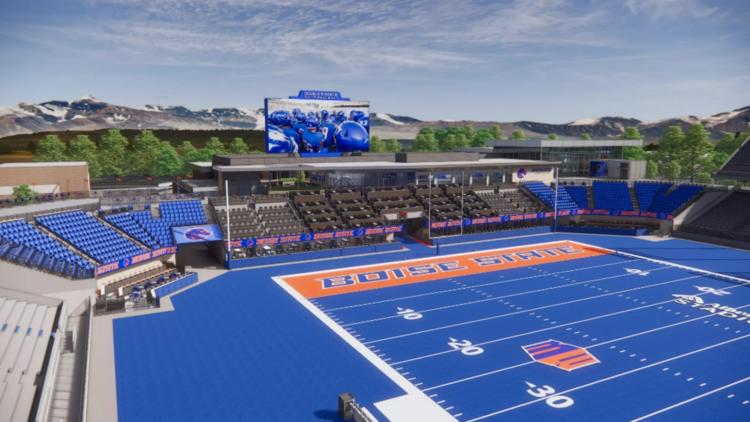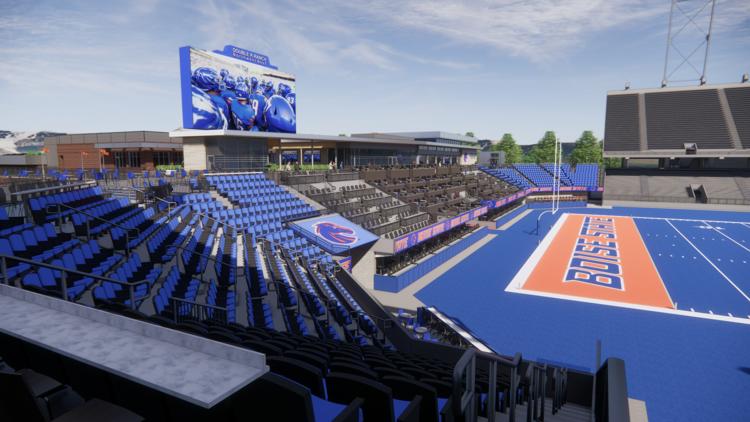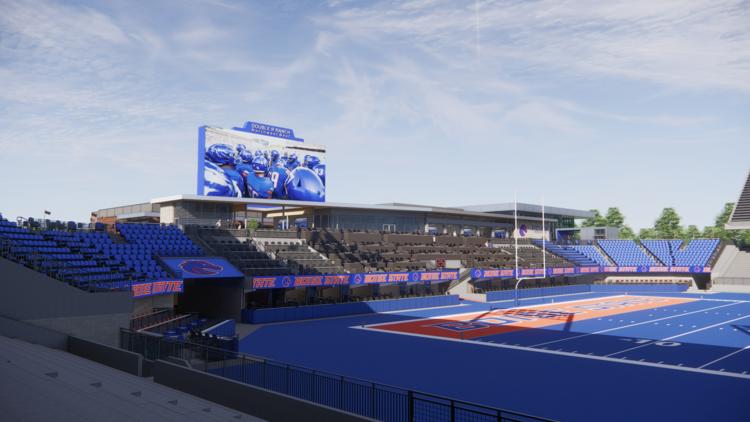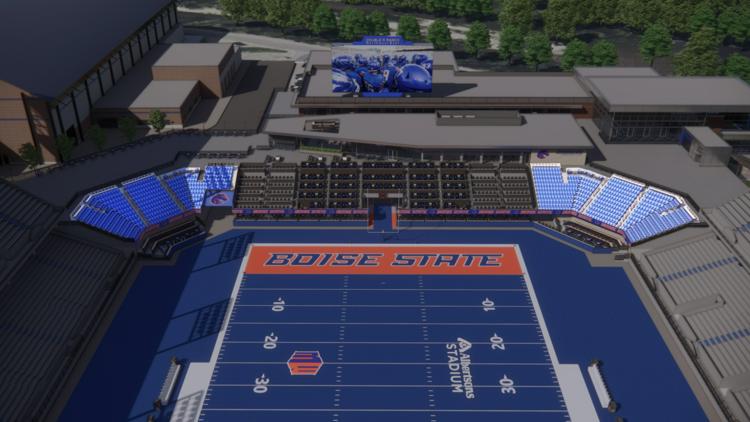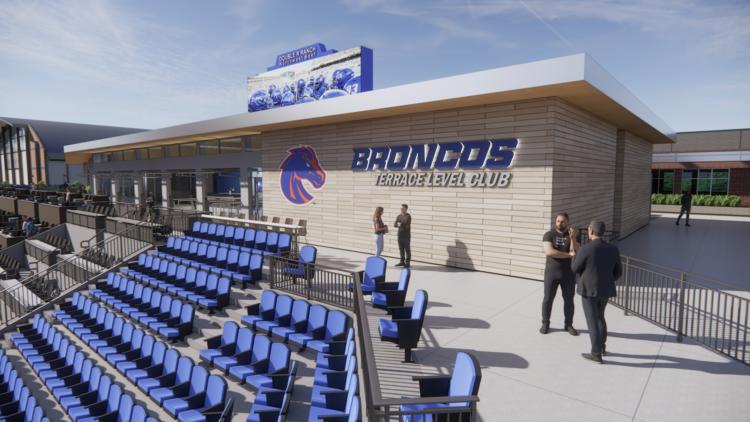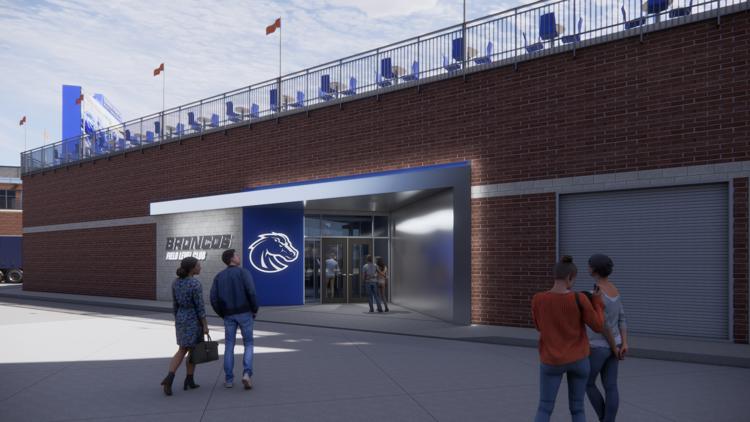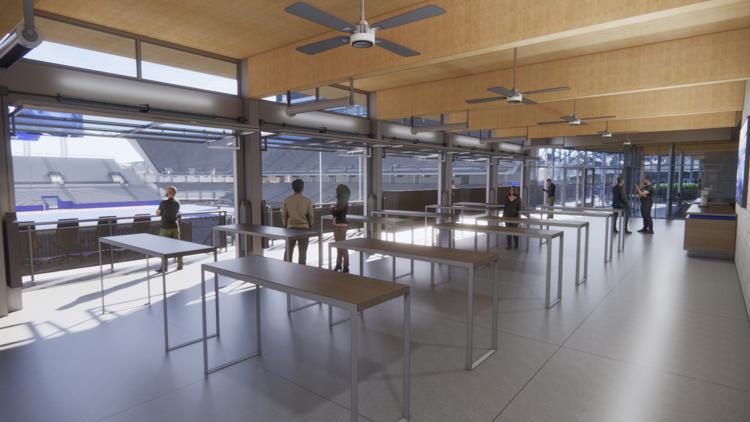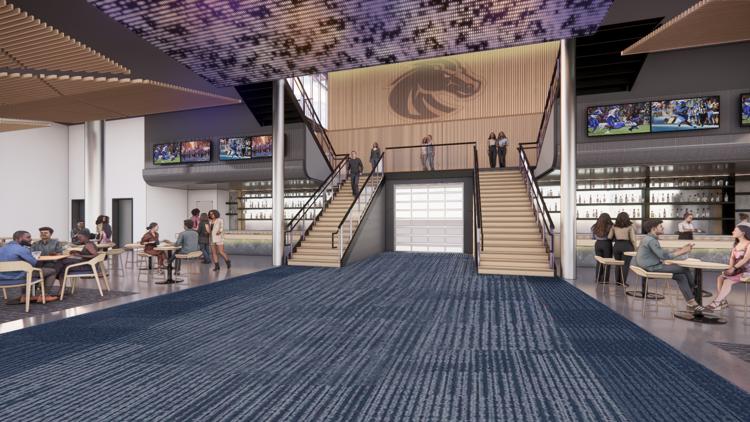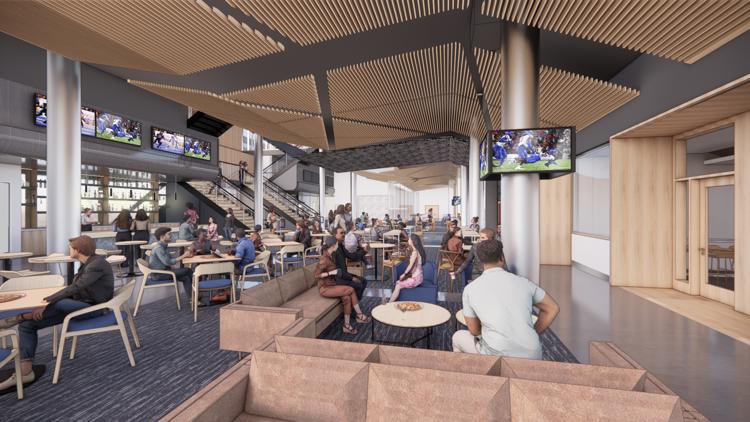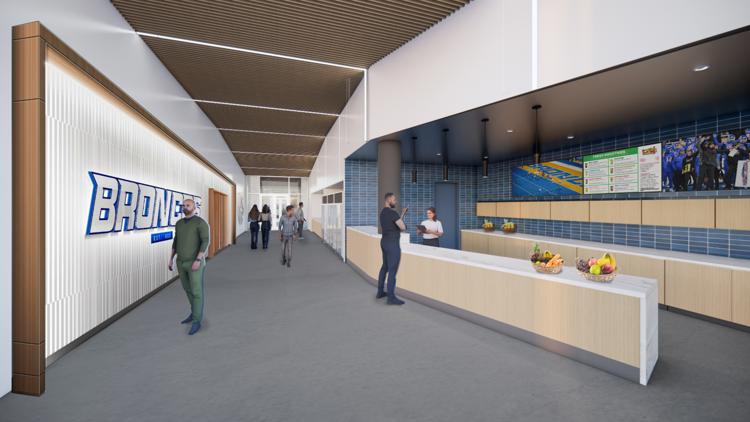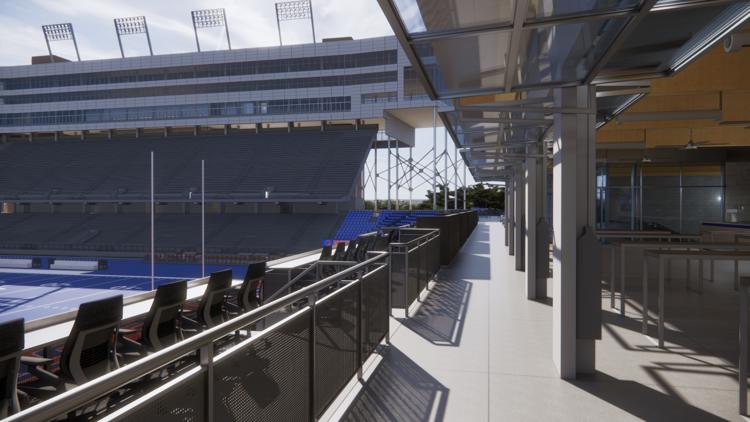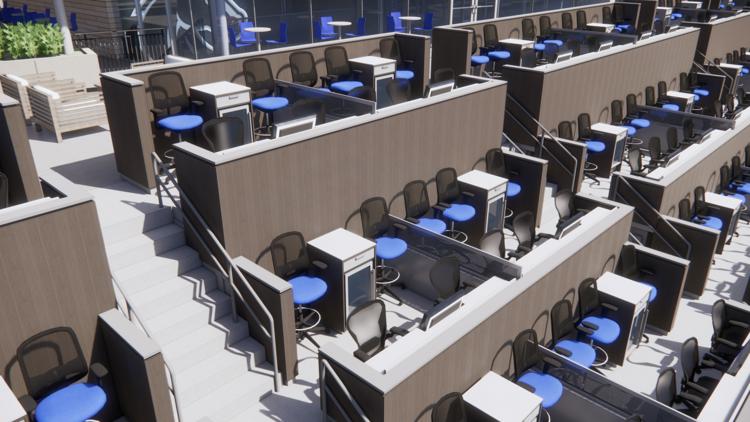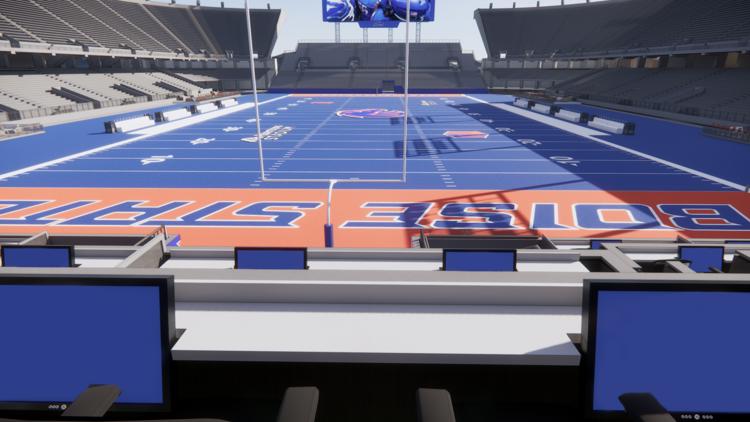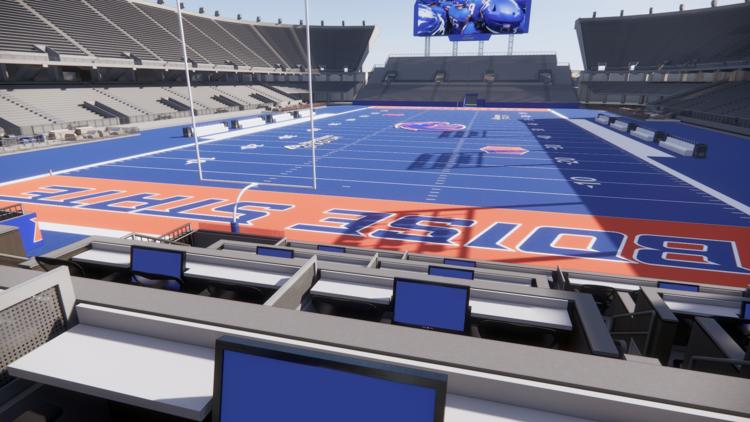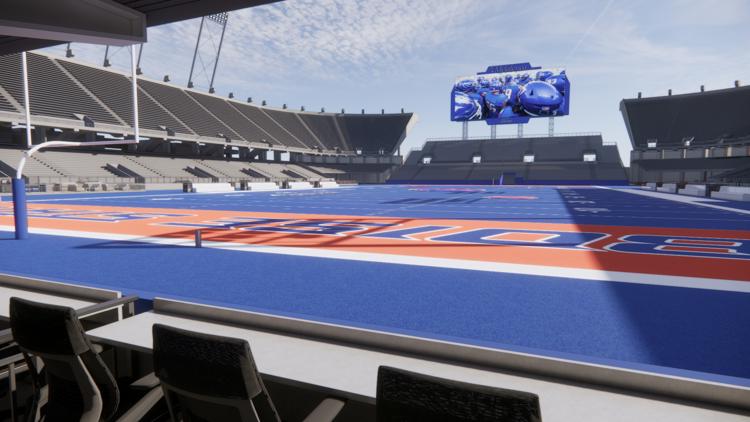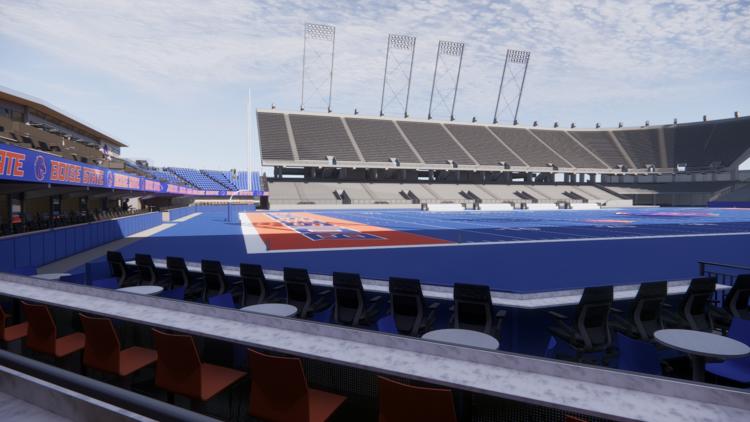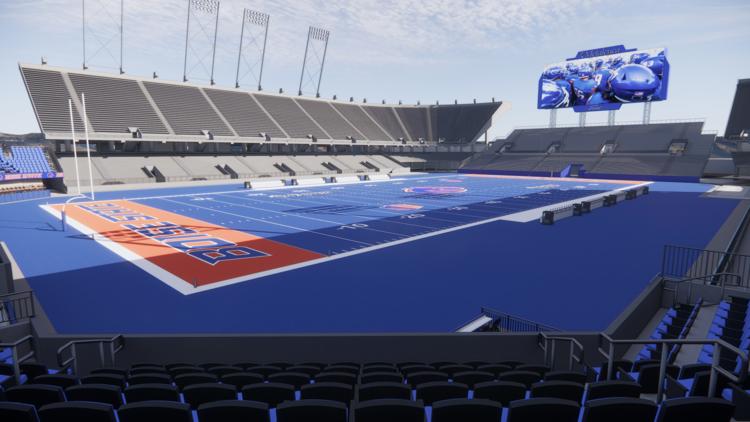BOISE, Idaho — If you aren't moving forward, you might as well be moving backward. It's that kind of mentality that has led Boise State Athletics to develop its $65 million upgrade to Albertsons Stadium.
The athletic department revealed new details and a timeline for the North End Zone Project on Wednesday. It will feature a dozen field-level suites, 44 loge boxes and 882 club seats. All of it will have access to food and beverage options.
Upon final approval, Boise State hopes to break ground on the renovation in January 2025, with completion expected just before kickoff of the 2026 season.
While the new addition actually takes away about 1,500 seats when it comes to capacity, according to head coach Spencer Danielson, it will enhance the experience for Bronco Nation.

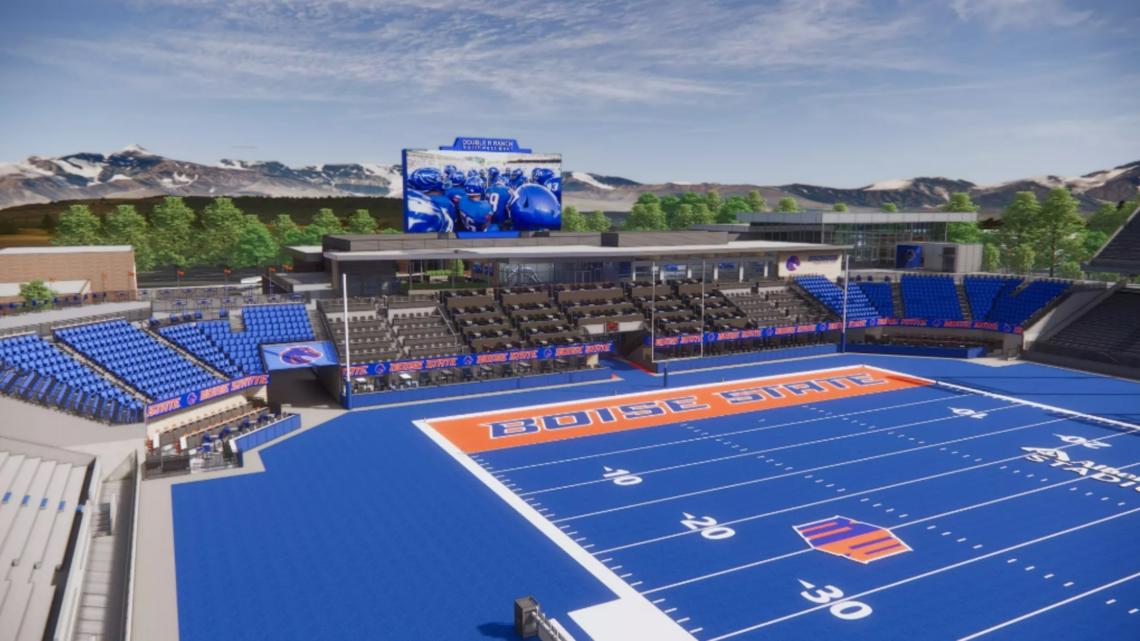
Between approximately 35,000 seats, the LED light shows, the 6,000 square-foot video screen on the stadium's south side – and now beer – where the Broncos play football has come a long way in the last 90 years.
In order to appreciate the vision for the future of Albertsons Stadium, with up-close suites and all-inclusive amenities, it helps to see where it all started. In 1933, one year after the formation of the school, Boise Junior College fielded its first football team.
Those early years saw the team play on a patch of grass, where the Student Union Building now stands, called college field – a fenced-off facility sports a 300-seat set of bleachers. But they did have lights.

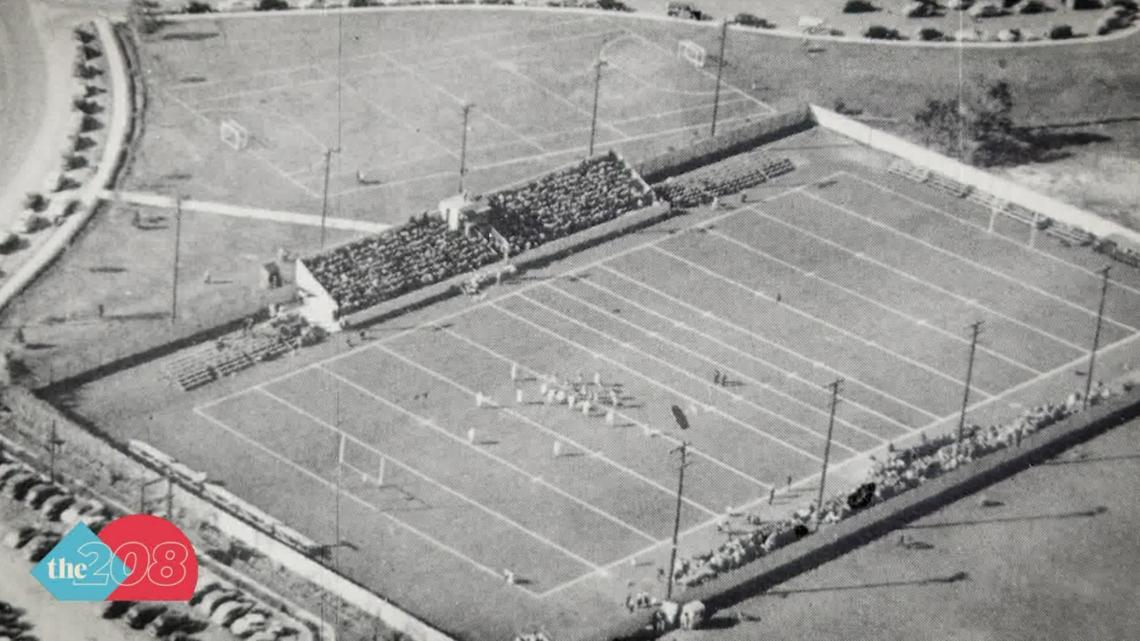
"It offered football in a setting, as one alumnus phrased it, much like turning on car lights so there'd be enough light to play," former KTVB Sports Director Larry Maneely said in a 1990 story.
The product on the field was enough to bring in the fans, so that by 1950, they moved the games to where the parking lot is today, and increased capacity to 10,000 with not-so-new wooden bleachers.


"They got the excess lumber from someplace up around Richland, Washington … We thought we were in hog heaven when we got that one," former Boise State head coach Lyle Smith said.
Despite the threat of splinters, Bronco fans filled in to watch the team run off four-straight undefeated seasons, including a junior college national championship in 1958's Little Rose Bowl.
The stadium stayed slanted, angled toward Broadway, through the 1960s.
Boise State University graduate and Bronco sports historian, Tom Scott, attended his first game in the old stadium with wooden bleachers. He would watch the changes first hand from then, beginning with the school becoming a state college in 1968, and then a build-up of the west side of the stadium.

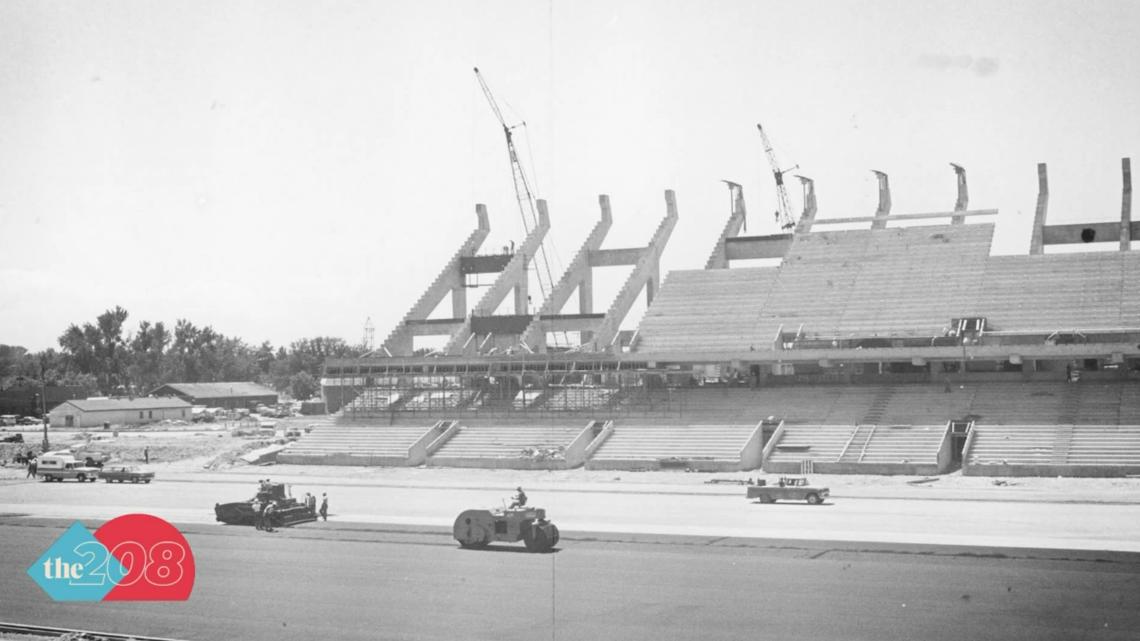
"In 1970, a new permanent home was built of concrete and Astroturf," Maneely said. "Double deck on the west side allowed 14,500 fans to sit in on Bronco football, as the program left behind the soggy turf that bogged down teams on wet fall Saturdays for two decades."
Scott said he was there on opening night, "and been kind of hanging around ever since." He remembers how much fun the Broncos were to watch.
"It was wide open passing attack and offense attracts fans, so that was really the growth of the program," Scott said.
Boise State would use the formula to build up Bronco stadium.
"They had great success in the early 1970s, won three Big Sky championships, and so the east side upper deck was added in 1975 and that took the capacity from 14,500 to 20,000," Scott said.

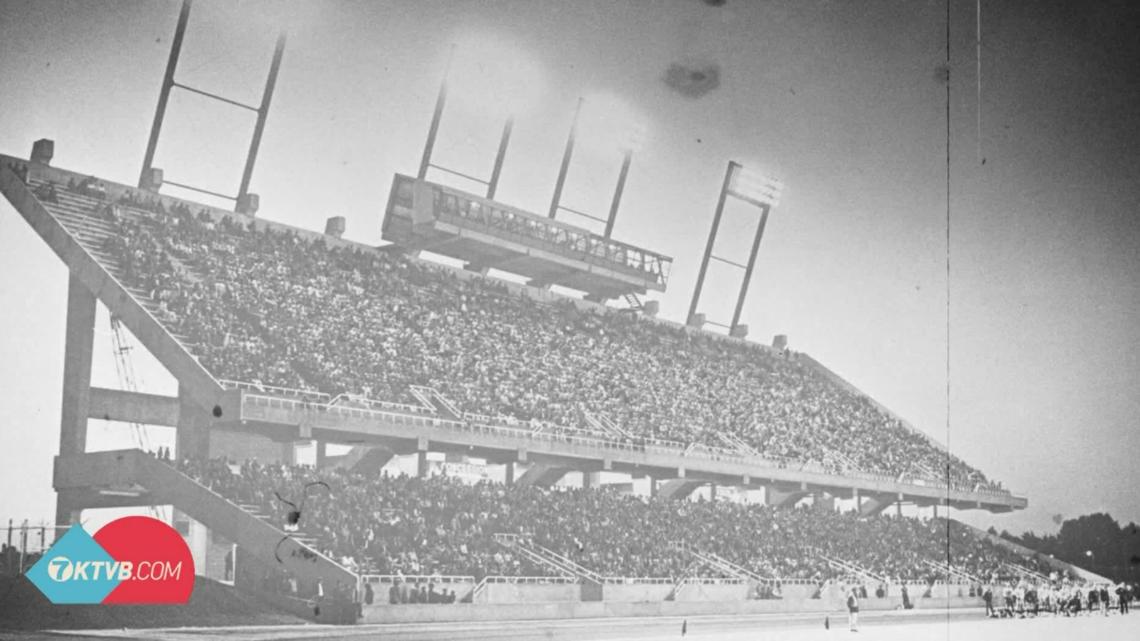
Repeat appearances in the NCAA playoffs through the 1970s and a Division I-AA national championship in 1980 would mean more seats were needed.
"Stadium expansion continued with the addition of east side upper deck stands, bringing capacity to over 21,000," Maneely said.
It still wasn't enough. With the Blue Turf added in 1986, Bronco fans set attendance records into the late 1980s.
"I think there was a crowd of 23,000 for the Boise State vs. Idaho game in '88 and that was a record that stood for quite a while," Scott said.
Bronco fever even sparked fever dreams of a 40,000-seat stadium in 1990.
"Our plan right now is to enlarge the south end of the stadium as quickly as possible," former Boise State athletic director Gene Bleymaier said.
Scott said the plan was "a little ambitious."
However, a jump to Division I in 1996 meant they needed a minimum of 30,000 seats.


"Then the bleachers were added in the north end zone, and then the south end zone, and then the corners were added in 1997," Scott said.
Then came the Fiesta Bowl of 2007.
"That spurred the Stueckle Sky Center. I think it was in the works, but the groundbreaking for the Stueckle Sky Center was about six weeks after the Fiesta Bowl and fundraising went very well for it," Scott said. "That was a gamechanger because they had a Division II press box – let's call it what it was – it was the same as what it was when it opened in 1970 and it was cramped. It became a big time stadium in '08."
The wrap-around track was removed in 2012 and Albertsons added their name with a redo of the south end zone seats in 2014.
"That gave it the current capacity of 36,000-plus," Scott said.
90 years of Bronco football – still building on the future.
"I would never have envisioned this place looking like it does now," Scott said. "Nobody could have predicted what was going to happen in the past 25 years."
As for that plan for 40,000 seats Maneely covered in 1990, Boise State could get to that, eventually. As Scott pointed out, 35,000-plus seats puts Albertsons Stadium on par with Martin Stadium at Washington State and Reser Stadium at Oregon State.
So, there really isn't much of a need, plus completing an upper deck wrap-around on the north end zone would ruin the view of the foothills and downtown Boise.
Speaking of Oregon State, the Broncos will host the Beavers in FOX's Big Noon Game at 10 a.m. MT on Friday, Nov. 29. The Black Friday matchup on The Blue serves as the regular-season finale.
Photos: North End Zone Project
Join 'The 208' conversation:
- Text us at (208) 321-5614
- E-mail us at the208@ktvb.com
- Join our The 208 Facebook group: https://www.facebook.com/groups/the208KTVB/
- Follow us on Twitter: @the208KTVB or tweet #the208 and #SoIdaho
- Follow us on Instagram: @the208KTVB
- Bookmark our landing page: /the-208
- Still reading this list? We're on YouTube, too:
HERE ARE MORE WAYS TO GET NEWS FROM KTVB:
Download the KTVB News Mobile App
Apple iOS: Click here to download
Google Play: Click here to download
Watch news reports for FREE on YouTube: KTVB YouTube channel
Stream Live for FREE on ROKU: Add the channel from the ROKU store or by searching 'KTVB'.
Stream Live for FREE on FIRE TV: Search ‘KTVB’ and click ‘Get’ to download.


